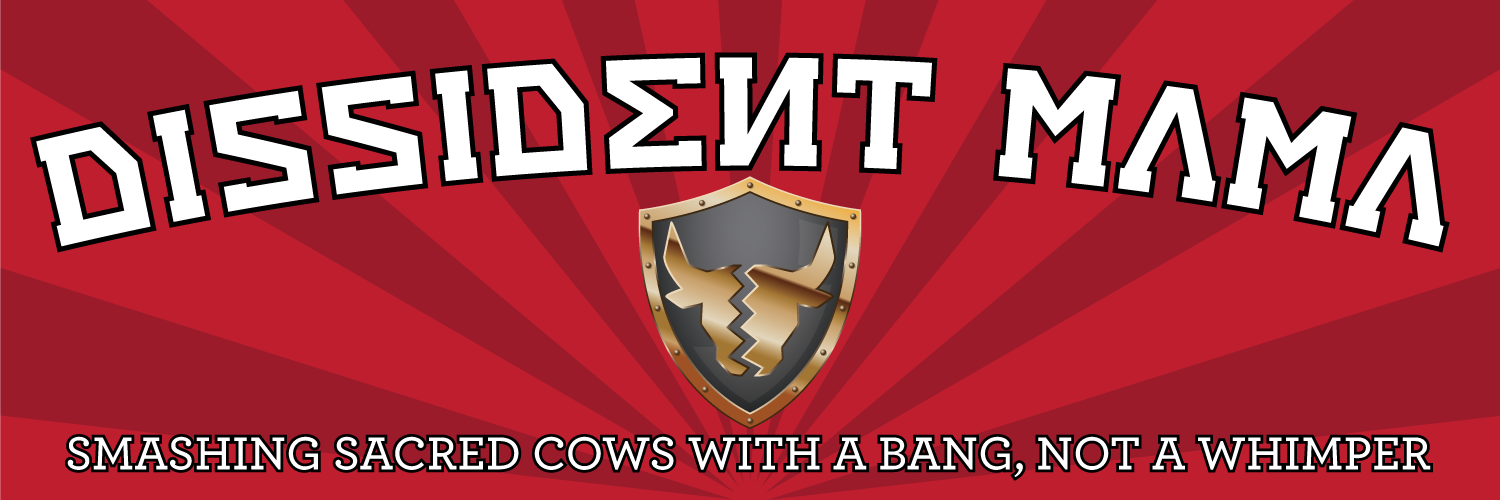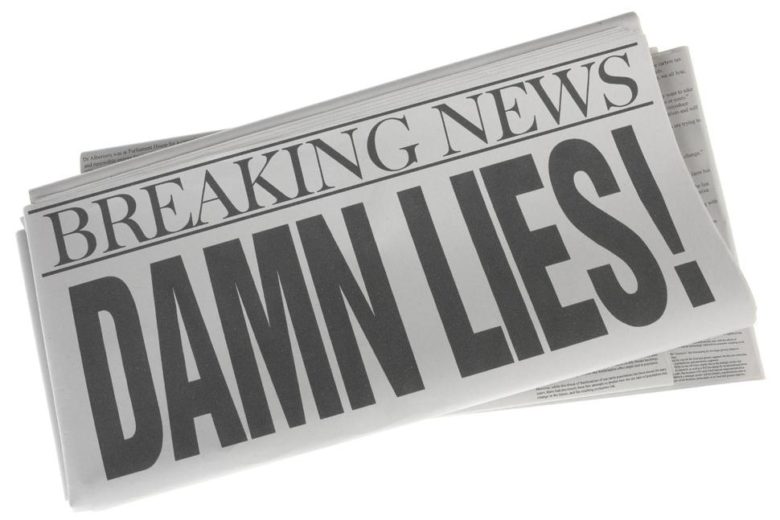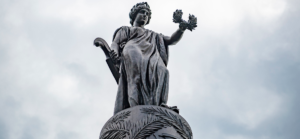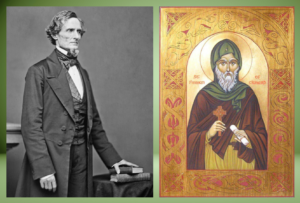When I was working toward my journalism degree at UW-Madison back in the ‘90s, I was taught that although objectivity is a crucial goal for all serious reporters, it must be acknowledged that we also bring our own biases and experiences to each and every story. Humans have a personal lens through which we see the world, and it colors our work.
J-school students were instructed to utilize this recognition of reality when seeking out topics and sources, formulating interview questions, and honing information. The goal was to let the story unfold as naturally and honestly as possible without getting in the way. It’s what we called “community journalism” or “civic journalism.”
This methodology, of course, sometimes takes a writer to a place where he doesn’t want or intend to go. But this style of reporting would serve as a vehicle for discovering truth – our modern journalistic imperative.
This isn’t how it’s always been in the media. In fact, the quest for any type of objectivity is a relatively new phenomenon – a half-ass, half-hearted pursuit at best, or a total ruse at worst. I think the latter, but you can decide for yourself.
It was long common knowledge that the printing press was just a tool for conveying thought in all of its subjective glory. Benjamin Franklin, who created the first newspaper chain, used his publications for political satire and lessons on moral virtue. Disagreements between competing publishers propelled Thomas Paine’s widely printed and circulated pro-independence pamphlet, Common Sense, to best-selling status and subsequently fostered revolutionary fervor throughout the colonies.
Thomas Jefferson often utilized the frequent “pen for hire” practices, paying reporters to create hit pieces on his political enemies, most notably vilifying stories about President John Adams … while Jefferson was VP! Scandalmonger James Callender published hearsay about political powerhouses like George Washington and Alexander Hamilton, but is best known for his libelous breaking story on Thomas Jefferson’s alleged affair with slave Sally Hemings.
“A newspaper is a device for making the ignorant more ignorant and the crazy crazier.”
— H.L. Mencken
By the War Between the States, newspapers continued to be extremely editorialized. As the second Confederate capital, Richmond was the hub of Southern media and offered up four daily newspapers, which were circulated throughout the South. Some were more restrained in their partisanship than others, but none were objective by modern standards. Highly subjective journalism was the norm and was paralleled in the North, which is why Lincoln shut down Yankee publications he deemed too critical of his administration and its war policies.
American journalism was been built upon a pretty free foundation: citizens with the fortitude and a little cash could set up a press, and anyone with good networking skills and something to say could disseminate his opinions, whether under his real name or a pen name. So Americans, from the sensationalist to the sincerest of truth tellers, the stalwart statist to the revolutionary rabblerouser, were able to effectively communicate “all the news that’s fit to print.”
Back then, people understood that the press was biased, which is why cities typically had multiple papers whose pages brimmed mostly with opinion pieces. Want to be in the know? You’d either pick the publication that mirrored your perspective, or you’d buy a couple different ones to hear opposing angles on a topic.
By the late 19th century, “yellow journalism” was the fashion. Historian and journalist Frank Luther Mott described its main characteristics as “scare headlines in huge print, often of minor news … use of faked interviews, misleading headlines, pseudoscience, and a parade of false learning from so-called experts … (and) dramatic sympathy with the ‘underdog’ against the system.”
Joseph Pulitzer and William Randolph Hearst made their names as powerful newspaper men who battled it out for circulation dominance, using any sordid means necessary to bury the competition. It was during their reign that William McKinley became the first president to allow reporters to work inside the White House, also setting the precedent of having his secretary hold daily briefings, all increasing the allure of a respectable press.
When McKinley was shot, though, many blamed Hearst, since two of his reporters had written columns suggesting McKinley’s assassination. But this was a minor hiccup in the mainstream press’ coronation as the kings and queens of truth-telling. Progressivism was all the rage, so the public was beginning to weaken in independent thought, buying more and more into the indolence of media manipulation and giving the increasingly established press credence that it usually didn’t deserve.
“If you don’t read the newspaper, you’re uninformed. If you read the newspaper, you’re mis-informed.”
— Mark Twain
The “muckrakers” came about as a supposed counter to the trend of sensationalism steered by powerful media magnates. They’re considered to be America’s first investigative journalists, yet all were reform-minded progressives, who were hell-bent on smashing capitalism and spreading socialism. Funny how that’s so often the case.
This period also featured a watershed media moment: the first time the press lied the country into a foreign-interventionist war, setting the stage for a century-plus of empire building. “The rebels were cast in the same mold as the patriots who fought for American independence,” PRI’s Christopher Woolf said of journalism during the lead up to the Spanish-American War. “Spanish atrocities were played up; rebel atrocities were ignored. The editorial line was that America should help.” Sound familiar?
Teddy Roosevelt began work with what we think of today as “the press corps” and promoted press secretary to a cabinet-level position. He comprehended the weight and influence of the muckrakers, who all worked for popular magazines. So, Roosevelt gave exclusive access to reporters, like Lincoln Steffens, in order to maneuver stories on his own terms. Political hacks proliferated throughout the press, yet they were often revered as honest journalists.
The “function of news is to signalize an event, the function of truth is to bring to light the hidden facts, to set them in relation with each other, and make a picture of reality on which men can act,” explained writer Walter Lippmann, who urged progressive-era reporters to use the scientific method in gathering information and crafting stories. He saw journalism as “intelligence work” in which newspaper men were the watchdogs of policymakers and advocates for the people.
Although Lippmann understood that a reporter’s rendering of truth was limited to his grasp on reality, his objective-oriented journalism took root and became the dominant media myth of the last century. It also launched the mainstream press even further to the undeserved status of an ethical and principled institution. Thus, for much of modern times, the press has been generally accepted as “the fourth estate”: a respectable and autonomous establishment that functions in a sphere beyond the clutches of government, business, and interest groups.
“The best fiction is far more true than any journalism.”
— William Faulkner
But why? Some of journalism’s finest were explicitly not truth tellers. New York Times’ Walter Duranty covered-up the Soviet famine and starvation in Ukraine, Herbert Matthews wrote deceptive articles and half-truths during the Cuban Revolution, Judith Miller reported false stories about WMD in Iraq, and Jayson Blair made-up and plagiarized entire pieces on a myriad of topics.
Pulitzer himself published Louis Seibold’s totally fabricated interview with Woodrow Wilson. Washington Post’s Janet Cooke invented the now infamous “Jimmy’s World” story out of whole cloth. And Rolling Stone’s Sabrina Erdely penned the now discredited UVA rape story, which turned out to be a complete hoax. Very telling, too, that many of these “legitimate” journalists won Pulitzer Prizes for their fantastical work.
And those reporters don’t even include the seemingly endless list of government coverups perpetuated by the mainstream press. My former UW professor, Robert W. McChesney, has written extensively on this and the conglomeration of media into the hands of a few. “The genius of newsroom professionalism is that it tends to make editors and reporters oblivious to the compromises with authority they routinely make,” he wrote in The Death and Life of American Journalism.
It’s clear to me that we’ve had a partisan press from the very beginning, but fear not. Citizen journalism is on the rise, friends. And like our revolutionary ancestors, savvy consumers of media may have to do a little heavy lifting, but unearthing truth is and always has been well worth the effort.
More about that in “Fake news, part 2: Dinosaurs & dissenters.”






Comments
Pingback: The Myth of Objectivity – Ephektikoi